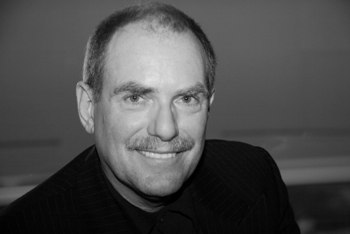"Raise Your Hand if You Love Your Cable Company"

In the past three months I have delivered around 35 speeches and presentations. During about 25 of them I have asked the audience the question that is the title of this column (why I will explain later).
Whether it is a confidential gathering of 10-15 CEOs or a hotel ballroom of 400-500 people, when I ask this question, I have never had anyone raise their hand. That is worth repeating. 25 times I have asked audiences to "Raise your hand if you love your cable company" and not a single person has raised their hand!
Not only that, but most of the time this question provokes laughter. People think the question is funny. The laughter clearly implies the absurdity of the question. Playing to the audience I usually quickly say something like, "Of course you don't. How can you love 'maybe we'll make it to your house on Tuesday between 8-4 and maybe we won't?'" or "Of course, why would you love a business model that is like going to a restaurant, ordering the chicken and being asked how you like your steak prepared because you have to buy everything on the menu whether you want to consume it or not?" Even if you only watch 5-8 channels you have to buy 100. People nod their heads, turn to each other and make comments, none of which seem positive.
Now some of you might immediately react that the question is unfair because I used the word "love." Well, think about how the audience might respond if, instead of "cable company" any number of words were substituted: Raise your hand if you love your: iPhone, Prius, iPod, Blackberry, Google, netbook DVR, The Daily Show or any number of TV programs. There are many things in our lives that we love, but cable does not seem to be one of them.
Why do I ask this question? I ask this question to make two points. The first point is "Power to the People" and the second is that technological disintermediation, which has wreaked havoc on the broad landscape of media the past 10 years, is about to come into the living room.
Power to the People
This is not a throwback to the clenched fists in the air of the 1960s. Rather it is a phenomenon that, though around for centuries, has particular significance when combined with technological innovation.
In the last 20 years consumers have been provided with an ever increasing amount of choice in their lives. There is no category in your life where you have less choice than you did 10 or 20 years ago. (OK, maybe newspapers or uniquely formatted radio stations, but you get the point.) This explosion of choice means that the power has moved from the producer to the consumer, from the institution to the individual. Therefore, we as individuals have more power than ever before. We increasingly want what we want, when we want it, the way we want it. That is just the reality of a connected, always on electronic environment.
The story of Napster, file sharing and the music industry is most often couched in terms of a disintermediating technology. That is true, but the reason why file sharing spread so rapidly is power to the people, particularly with the young demographic. For years the music industry charged $14, $15 then $16 for a CD, a product that needed a sharp object to open and that when opened provided maybe 5-6 songs that were any good. Young people learned to hate the music industry and the way they jacked up prices for products that provided less and less satisfaction. When provided with a new technology – file sharing – that allowed young people first, then the rest of us to do an end around the music industry, the collapse of that industry happened with lightning speed.
Is there anyone reading these words who has not downloaded some free music or burned a friend's CD?
When deep customer dissatisfaction meets technological innovation, entire industries can be quickly eviscerated.
Technological Disintermediation in the Home
It is estimated that as we approach the end of 2009 some 2% of Americans watch video exclusively on their computers and mobile devices. Well, at some point 2% of Americans had cell phones, computers, smart phones and MP3 players. What are those percentages today?
There will be simple plug-in devices entering the living room in the next few years that will allow the average consumer to plug the Internet directly into the 50" flat screen. There will continue to be compression technology developments so that HD can be streamed, even over high speed wireless. When will that $100+ cable TV bill seem to feel like the $16 CD? In the next three years. What will the cable companies do when people demand lower cost, a la carte channel choice or choose to disconnect?
I know many people in their 20s that exclusively use television sets for playing video games or watching DVDs, not watching television programs. They do that when they want to on their computers. They focus on the second and third screens. Space constraints – and the length of attention you bring to the reading of a blog – limit this column from continuing with forecasts, so I will end with just one.
Cable television subscriptions will experience noticeable percentage declines in the next three to five years. This decline will only be slowed if they accept unbundling and price per channel. This will cause a variety of cascading problems for all those reliant upon cable television distribution.
David Houle is a futurist, strategist and speaker. He has always been slightly ahead the curve. Houle spent more than 20 years in media and entertainment. David can be contacted at David@DavidHoule.com.
Read all David’s MediaBizBloggers commentaries at David Houle - MediaBizBloggers.
Follow our Twitter updates @MediaBizBlogger


